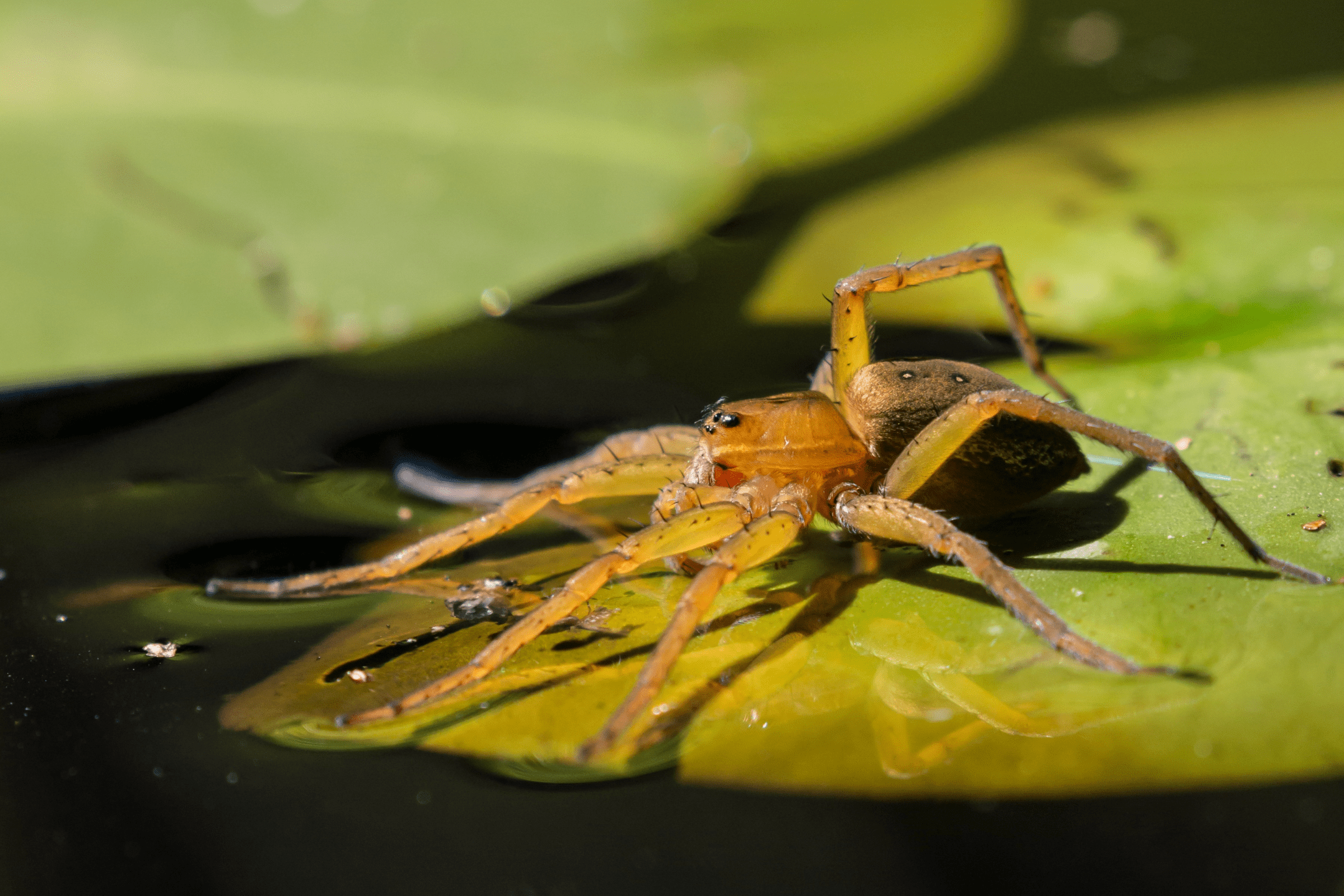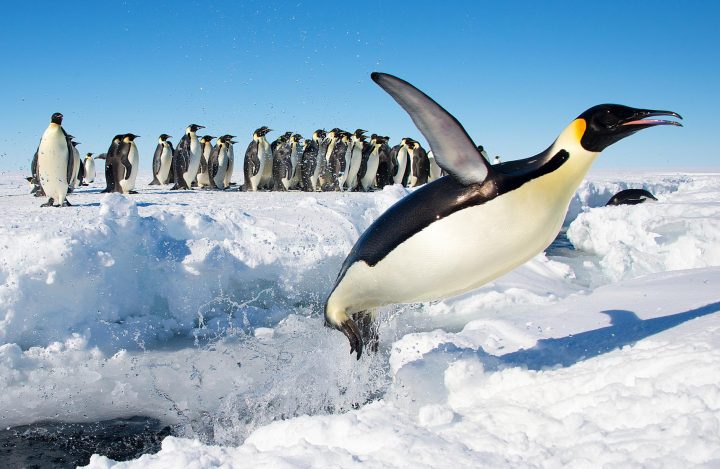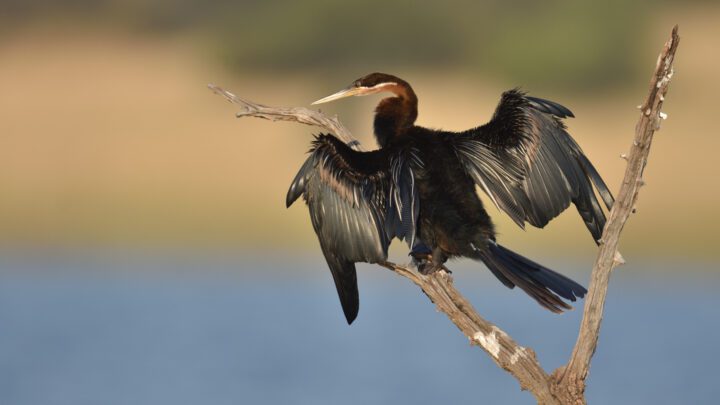The legs of the fishing spider enable it to 'row' across the surface of water using the horizontal propulsive forces generated by the drag of the legs and their associated 'dimples.'
“What happens is that the leg and dimple (the latter from the downward weight transferred by the leg) act as a unit. Both move rearward as the animal pushes, and the rearward drag of the unit generates the forward thrust (fig. 5.8b). (Moving a dimple backwards forces water to move forwards, hence this nonobject has perfect ordinary drag.)” (Vogel 2003:108)
“Fishing spiders live throughout the United States, although they’re
particularly abundant in the South. They lurk along the edges of ponds
and streams, and when insects drop to the water, these spiders rush
across the surface to attack. They can also dip their legs underwater
and grab swimming tadpoles and small fish.
The first order of business for animals with this lifestyle is to stay
on top of the water. Fishing spiders do so by taking advantage of
surface tension. Water molecules are more attracted to one another than
they are to molecules in the air. This molecular pull makes the surface
of water act like a sheet of rubber. When a spider sets a leg on the
water, a dimplelike depression forms around it, and the water pushes
back up to regain a smooth surface…
Although surface tension can keep fishing spiders afloat, it makes it
hard for them to go anywhere. On land they can push their legs against
solid ground, generating an opposing force that carries them forward.
Their waxy legs can’t get a purchase on the surface of the pond,
however; the water is, in effect, too slippery to permit the spiders to
move.
But move they do, and for the past few years Robert Suter, a
biologist at Vassar College, has been studying just how they do it.
What he has found is that the spiders row across the water’s surface by
using the dimples their legs make in it. When a fishing spider moves
one of its legs from front to back, it draws that dimple back with it.
As the dimple moves, it acts like an oar, pushing against the
surrounding water and creating a force that propels the spider forward.
A fishing spider rows with the middle two of its four pairs of legs.
First it swings back its third pair, then the second pair, and when
both pairs are extended as far back as they can go, the spider raises
them from the water and brings them forward again. Meanwhile, it keeps
its front and rear pairs of legs motionless, using their surface
tension to keep itself afloat while it prepares for the next stroke…
There’s a limit to how fast fishing spiders can travel this way,
however. To speed up, a spider can either make deeper dimples (giving
itself bigger oars) or push them back faster.” (Zimmer 2000)





